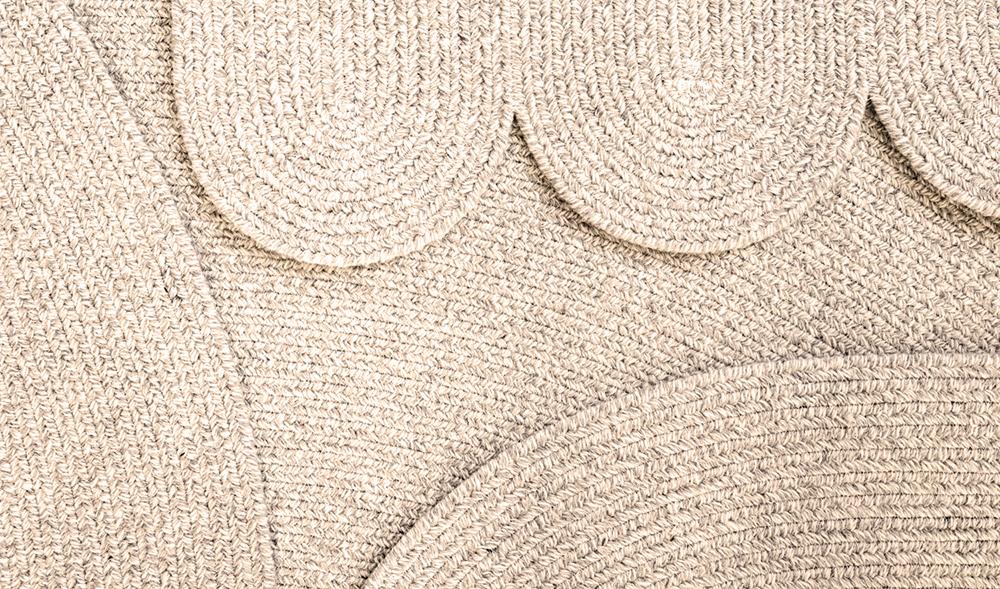Caroline Cockerham and Laura Tripp both attended N.C. State’s College of Textiles, but didn’t meet until they went to work for Patagonia in California.
“We were material developers,” Cockerham says. “We got our heads on straight out there – Patagonia helped us learn how to build products sustainably.”
After a stint in New York – they both lived on the same urban block – they decided in 2019 to launch their own firm.
They call it CICIL. It’s a riff on the Cecil soils of North Carolina – deep, well-drained, moderately permeable soils on upland ridges and side slopes. “It’s a great agricultural soil – most anything would grow in it,” Tripp says.
Cockerham, who grew up in Greensboro, says it’s nice to connect to the earth. And they do that in more ways than just the firm’s name. This woman-owned firm places a strong emphasis on sustainability – from the start of the supply chain to the finished product.
They specialize in braided wool rugs, from the sheep-grazed-and-composted fields of Upstate New York, Pennsylvania, and Vermont to the finished products made up of 70-percent wool and 30-percent jute.
“The outer part is 100 percent wool, undyed and just the natural colors,” Tripp says. “We source dark grays and browns to make a range of shades. At the core is the jute material.”
They hand-pick their long-staple wool from sheep on site, for a durable and soft product. “We select wool for the colors,” Cockerham says. “Dark colors can’t be used for apparel – they can’t be dyed. So our supply chain uses a lot of black and gray.”
CICIL offers a range of sizes for residential and commercial spaces. The smallest is a wall-hanging size or doormat and the largest is a nine-by 12-foot rug. They’re for residential and commercial spaces. But they also do custom design. “We’re doing a 40-foot runner right now,” Cockerham says.
The manufacturing process, which takes place in North Carolina (Cockerham lives in Durham, Tripp in New York) informs their designs. They look at the tools at hand, then explore how to play with them to innovate. “We found a really old way of making braided rugs – of how the pioneers took textile scraps home and made rugs,” she says. We design around the braided manufacturing method.”
They visit their manufacturers too, forming strong relationships with their entire supply chain as they do. And their attitude toward materiality reduces plastic consumption, a major driver for the millennial interior designers who are a key part of their core clientele.
“We want to be a model for small makers,” Cockerham says. “We make and scale products in an environmentally sound way.”
And they’re starting to take off – with an appearance scheduled for the High Point Market in late October.
So could the 2023 Architectural Digest Design Show be far behind?
For more, go here.
[slideshow id=2487]

